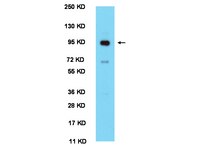Heterogeneous expression of the core circadian clock proteins among neuronal cell types in mouse retina.
Liu, X; Zhang, Z; Ribelayga, CP
PloS one
7
e50602
2012
概要を表示する
Circadian rhythms in metabolism, physiology, and behavior originate from cell-autonomous circadian clocks located in many organs and structures throughout the body and that share a common molecular mechanism based on the clock genes and their protein products. In the mammalian neural retina, despite evidence supporting the presence of several circadian clocks regulating many facets of retinal physiology and function, the exact cellular location and genetic signature of the retinal clock cells remain largely unknown. Here we examined the expression of the core circadian clock proteins CLOCK, BMAL1, NPAS2, PERIOD 1(PER1), PERIOD 2 (PER2), and CRYPTOCHROME2 (CRY2) in identified neurons of the mouse retina during daily and circadian cycles. We found concurrent clock protein expression in most retinal neurons, including cone photoreceptors, dopaminergic amacrine cells, and melanopsin-expressing intrinsically photosensitive ganglion cells. Remarkably, diurnal and circadian rhythms of expression of all clock proteins were observed in the cones whereas only CRY2 expression was found to be rhythmic in the dopaminergic amacrine cells. Only a low level of expression of the clock proteins was detected in the rods at any time of the daily or circadian cycle. Our observations provide evidence that cones and not rods are cell-autonomous circadian clocks and reveal an important disparity in the expression of the core clock components among neuronal cell types. We propose that the overall temporal architecture of the mammalian retina does not result from the synchronous activity of pervasive identical clocks but rather reflects the cellular and regional heterogeneity in clock function within retinal tissue. | 23189207
 |
Antibodies for assessing circadian clock proteins in the rodent suprachiasmatic nucleus.
LeSauter, J; Lambert, CM; Robotham, MR; Model, Z; Silver, R; Weaver, DR
PloS one
7
e35938
2012
概要を表示する
Research on the mechanisms underlying circadian rhythmicity and the response of brain and body clocks to environmental and physiological challenges requires assessing levels of circadian clock proteins. Too often, however, it is difficult to acquire antibodies that specifically and reliably label these proteins. Many of these antibodies also lack appropriate validation. The goal of this project was to generate and characterize antibodies against several circadian clock proteins. We examined mice and hamsters at peak and trough times of clock protein expression in the suprachiasmatic nucleus (SCN). In addition, we confirmed specificity by testing the antibodies on mice with targeted disruption of the relevant genes. Our results identify antibodies against PER1, PER2, BMAL1 and CLOCK that are useful for assessing circadian clock proteins in the SCN by immunocytochemistry. | 22558277
 |


















